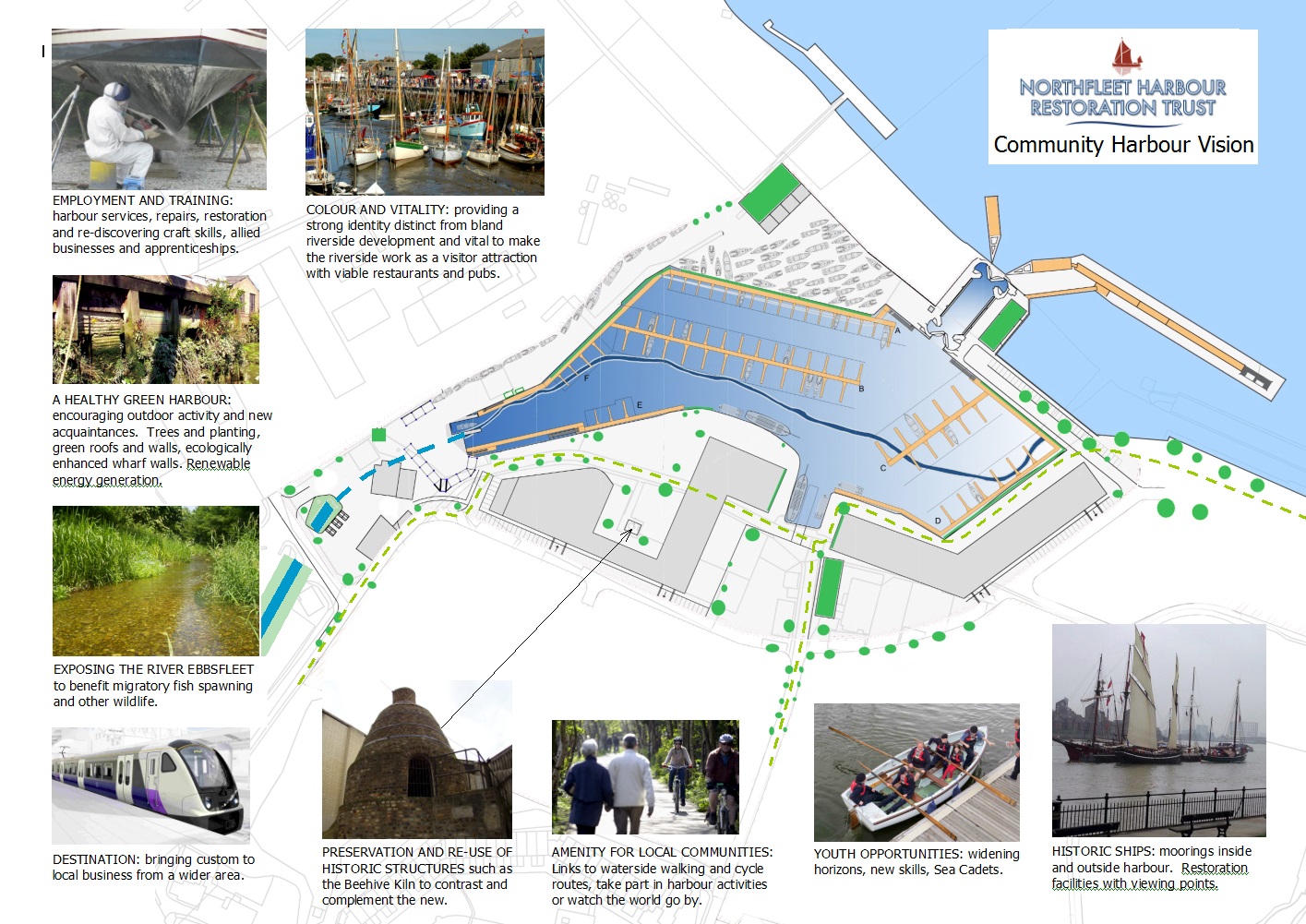Sponsors
National Historic Ships UK acknowledges the financial support of its sponsors

The History of Northfleet Harbour
Northfleet Harbour is formed from a natural river inlet of the River Fleet into the Thames. Parts of the harbour grew over solid chalk, forming a very usable marine facility from a very early time. Just a short distance upstream on the River Fleet (now known as the River Ebbsfleet), there is evidence of Roman temples, a Roman burial ground, and a Roman villa and related buildings, as well as a later thriving Saxon community which left behind a rare water wheel, excavated as part of the Ebbsfleet International and High Speed 1 railway works.
By the 18th century, the River Fleet was no longer navigable, as a watermill and weir had been created for flour production. Parts of these may still survive - a full archaeological study is needed - but this flour mill was then superseded by a water mill for cement production, parts of which do still survive.
About The Northfleet Harbour Restoration Trust

Northfleet Harbour Restoration Trust is a registered charity. A large part of the Trust's work is about raising local awareness with residents and users of the Thames about its potential. Despite its huge size, there has been little activity in the area since the Harbour was sealed off by a flood defence wall built across the entrance. The harbour itself is virtually intact with all of its walls being preserved as they were prior to World War II. These are in good condition and need little work to bring the harbour back into use
The Trust's Objectives

- Restore full use and access to the Historic Northfleet Harbour and its historic slipway
- Re-introduce spawning fish into the River Fleet and re-open the culvert along Thames Way between Ebbsfleet FC Football Ground and the railway line
- Create a centre for sporting activity and a birthplace for future champions
- Celebrate the very rich and hidden heritage of Northfleet Harbour area by opening it up to the public and providing interpretation an educational resources. To enable this, they will ensure a full archaeological investigation to explore the potential Roman and Saxon use of the harbour associated with the recent finds at Ebbsfleet, as well as to fully understand and interpret the modern industrial history from armaments and cement through to shipbuilding
- Restore the Northfleet Mill Pond to create a vital environment to promote biodiversity, fish spawning, as well as increasing the flood storage capacity of the River Fleet in the rare (and possibly unlikely) event that it should be needed
- Restore the 18th century tidal mill. This will perform several functions: it will aid the migratory fish transit, control water levels, provide interpretation for a valuable heritage asset and allow electricity to be generated for the use of the harbour and to feed into the national grid
- Provide a base for organisations like The Marine Volunteer Service and Sea Scouts to operate from, promote educational resources for both heritage marine and boat building skills
- Create a base for historic vessels and ship builders and repairers
- Create much needed employment for the residents of Northfleet
- Create a marina the size of Gillingham Marina with pretty much full tidal access 24hrs of the day (the Gravesend Canal Basin is only accessible 2hrs a day and is less than a fifth of the size of the huge Northfleet Harbour)
- Provide the only such facility between Ramsgate and London Docks and thus a much welcomed and much needed stop off point
- Provide an attractive destination for restaurants, shops, pubs and clubs and a major tourist destination as part of the neighbouring regeneration scheme.
LATEST NEWS
May 2023 The Trust held an Open Day as part of Gravesend's Local and Community History Month where people were able to visit and learn about the harbour and its pre Roman history, through to the birth of modern cement manufacture. They were able to answer the public's questions to the harbour's future amidst all the exciting developments going on, Ebbsfleet Garden City to the South, Harbour Village to the East and Northfleet Harbourside to the West, and to the North, the Port of London Authority's demise with the 2050 Thames Vision.
Follow them on social media:
National Historic Ships UK acknowledges the financial support of its sponsors